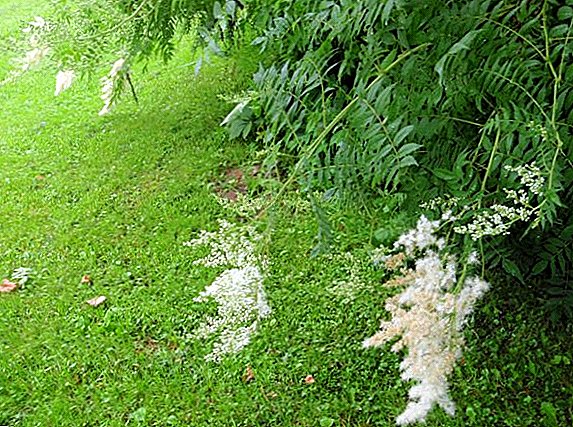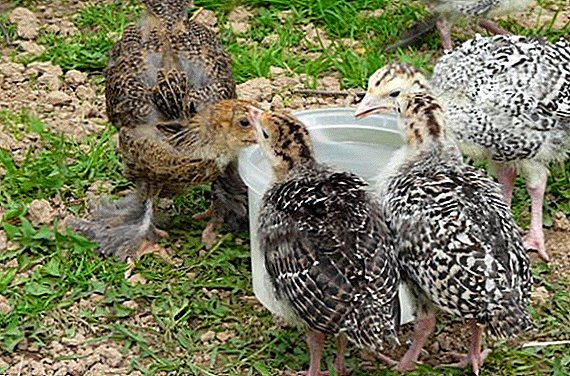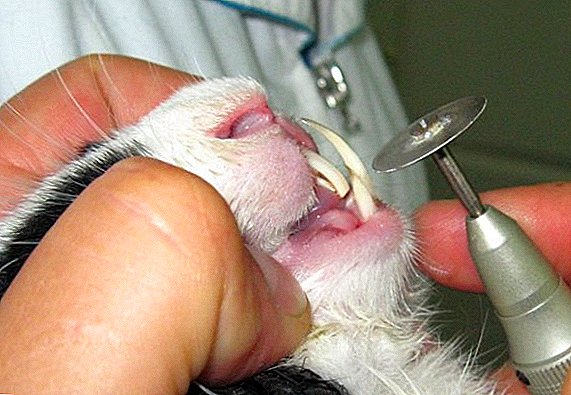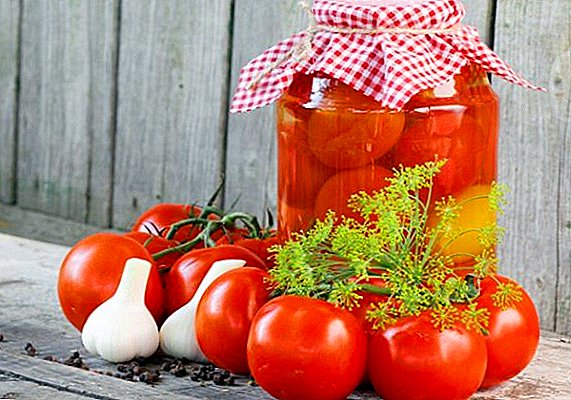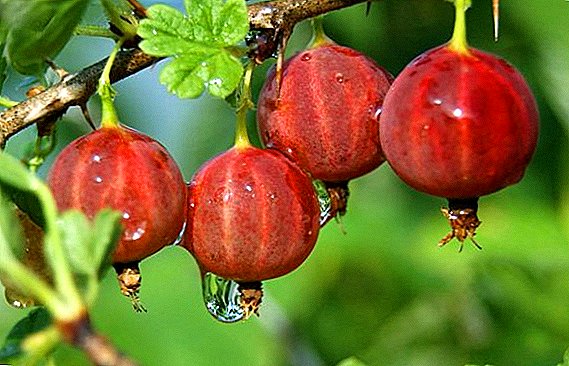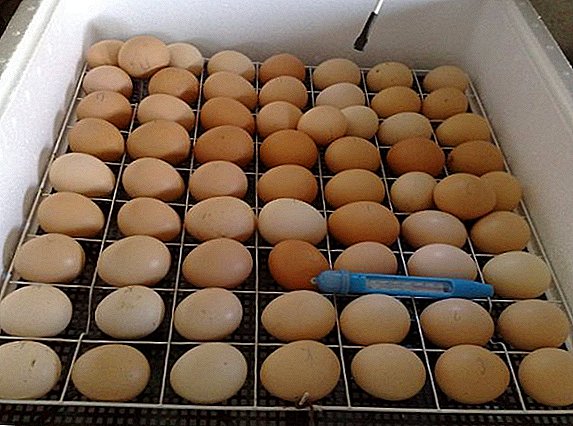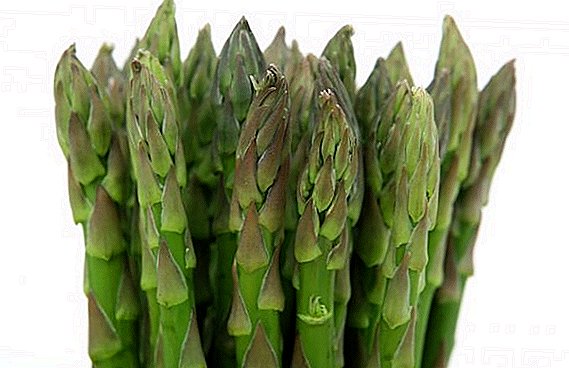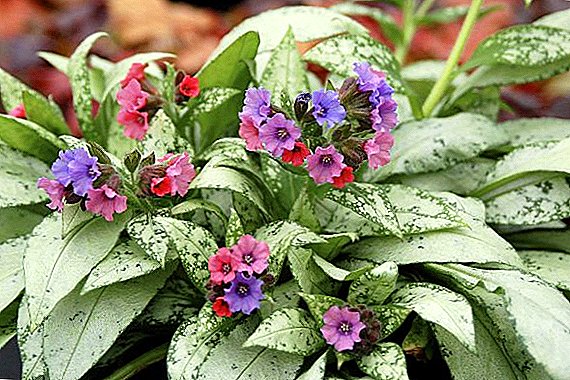 Arrangement of the territory adjacent to the dacha often provides for planting a variety of ornamental plants. Unfortunately, most of them are sun-loving and just wither in the shade. But what if most of the site is located exactly in the shade? The answer is simple - plant a lungwort. Her flowers will be an excellent decoration of any garden, and simplicity in terms of care will allow you not to spend a lot of time on this plant. All that is required of you (at the initial stage) is to select and plant the variety you like, and we will tell you how to do this now.
Arrangement of the territory adjacent to the dacha often provides for planting a variety of ornamental plants. Unfortunately, most of them are sun-loving and just wither in the shade. But what if most of the site is located exactly in the shade? The answer is simple - plant a lungwort. Her flowers will be an excellent decoration of any garden, and simplicity in terms of care will allow you not to spend a lot of time on this plant. All that is required of you (at the initial stage) is to select and plant the variety you like, and we will tell you how to do this now.
Decorative types of lungfish
Medunitsa is a perennial herb that often grows in open nature between trees and shrubs. Almost all its varieties are united by one feature: flowers of the medunitsa change the color of the corolla during flowering. Beginning to bloom in pink, they gradually change it to blue.
Did you know?The scientific name of the plant is "Pulmonaria", which is associated with its use in the treatment of lung diseases (from the Latin "pulmo" means "light"). More common for us "lungwort" got accustomed to the people because of the nectar contained in the flowers, especially since it is one of the earliest honey plants.
Today there are about 15 species of this plant, but not all of them have decorative properties. Therefore, we decided to select only those that are most often found in flower beds.
 Medunitsa red. The earliest type of this plant, which can please you with a bright red color for a long time. When grown in gardens, it grows very intensively, forming a dense ground cover of light green small leaves without spots.
Medunitsa red. The earliest type of this plant, which can please you with a bright red color for a long time. When grown in gardens, it grows very intensively, forming a dense ground cover of light green small leaves without spots.
Lunitolus medunitse. Despite the fact that this is a very spectacular view, in gardens it is quite rare. It is distinguished by its thermophilicity, although the main characteristic is unusual large leaves that change their color (in early spring they are green with silver spots, and closer to the middle of summer spots merge and the sheet becomes completely silver). Flowering begins in early spring, decorating the yard or garden with purple-red flowers.
Medunitsa officinalis. A low (up to 30 cm) plant that is distinguished by a high level of winter resistance (capable of withstanding temperatures down to -35 ° C). The flowering period lasts about a month and begins in mid-May. At the beginning of flowering, the corolla has a red color, and over time it becomes purple.
Long-leaved medunitsa. In height, this plant reaches 25 cm, and differs from other species in very spectacular leaves: their upper part is dark green in color, with scattered silvery spots, and the lower one is gray-green. Such plants are more resistant to direct sunlight, which is not true of other types of lungwort. Flowering begins in April. At first, the blossomed inflorescences have a pink color, but over time they acquire a blue tint.
 The softest medunitsa. This species forms dense bushes, whose height reaches 50 cm. Large blue-purple flowers appear at the end of April, and the flowering plant lasts until mid-summer. In August or September, may bloom again, and the leaves appear throughout the season.
The softest medunitsa. This species forms dense bushes, whose height reaches 50 cm. Large blue-purple flowers appear at the end of April, and the flowering plant lasts until mid-summer. In August or September, may bloom again, and the leaves appear throughout the season.
Medunits sugar (spotted). Refers to the ground cover species, and evergreen leaves create a fairly large carpet. With the advent of spring, the plant begins to bloom with a variety of inflorescences, which, as in the previous species, are able to change their color (in this case from carmine to purple).
Medunitsy obscure (or, as it is called, - "dark"). Another type of plant that can change the color of the inflorescences during flowering (from pink to blue or dark purple). In comparison with other species, the lungwort unclear is more demanding on the composition of the soil.
Proper fit is essential for good growth.
Lung care is, of course, an important issue, but first you need to properly plant it. The concept of "correct" landing implies the choice of the optimal time and place for locating the litter box, as well as the preparation of a suitable soil composition.
Optimum landing time
The most suitable time for planting a jellyfish garden, as, indeed, many other plants, is the beginning of spring. It was during this period that the earth is more saturated with nutrients and trace elements useful for plants, and the absence of frost allows the young plant to adapt to the new habitat.
Important!Medunitsa does not like stagnant moisture in the ground, so it is very important that the site has time to dry out after winter and is well drained. It is also necessary to clean the landing site from weeds.
How to choose a landing site
 An important advantage of pulmonaria over other plants is its unpretentious in terms of lighting. She can easily grow in the shade or partial shade, and direct sunlight is generally destructive for her. If there is no such place in your garden for growing lungfish, then try to place the plant where it will be protected from the sun for at least half a day (for example, under the spreading crowns of trees).
An important advantage of pulmonaria over other plants is its unpretentious in terms of lighting. She can easily grow in the shade or partial shade, and direct sunlight is generally destructive for her. If there is no such place in your garden for growing lungfish, then try to place the plant where it will be protected from the sun for at least half a day (for example, under the spreading crowns of trees).
Despite the fact that medunitsa is considered a moisture-loving culture, it grows poorly in too wet areas. In this case, it is necessary to equip a high bed for it.
Important! When planting a medicinal medunitsa, red or valovidnoy, you need to organize enough space for it, since specifically these species are prone to "spreading" on the site.
How to prepare the soil before planting
Pulmonaria does not have high requirements for soil composition and can grow on almost any soil, although when grown on fertile loamy-alkaline and slightly acidic soils, it will look especially good. Therefore, if there are poor soils in your summer cottage, then before planting a lung box it is better to apply organic fertilizers. When planting narrow-leaved species, fertilizers are not required, as the plants feel great on poor sandy soil.
However, this does not mean that, after planting a plant once, it does not need to be periodically fed. Even more favorable alkaline, slightly acid, sandy or loamy, loose soils should contain humus. therefore humus is regularly brought under the shrub and fed at least once a season (The most suitable month is July, when new leaves grow intensively at the plant). As a suitable solution using mineral fertilizer prepared at the rate of 15-20 g per 10 liters of water.
 It is no secret that medunitsa grows best in conditions of sufficient humidity, but the level of this humidity should not be too high therefore, ensure a good soil drainage system before planting.
It is no secret that medunitsa grows best in conditions of sufficient humidity, but the level of this humidity should not be too high therefore, ensure a good soil drainage system before planting.
The distance between adjacent bushes should not be less than 15 cm, although species that are prone to growth, it is better to plant 20, 25 or even 30 cm apart.
Basics of Lungwort Care
Each plant has its own requirements for its care, and pulmonaria is no exception in this regard. Therefore, intending to grow this plant, it is necessary to understand how to water, trim, fertilize and mulch correctly.
Watering and mulching the soil
In most cases, Medunitsa officinalis, as it is often called, it does not need frequent watering, therefore, it is necessary to apply a large amount of liquid to the soil only during the drought period. Most of all, the red look suffers from a lack of moisture: its large leaves lose their elasticity and wilt quickly, and in order to save the plant, they have to be cut.
With the arrival of spring, the soil around the low bush of the Lungwort is covered with mulch of natural origin: wood chips, peat, mowed grass or sawdust. Such a covering material with a thickness of 8-15 cm will save the top layer of soil from overheating, drying out, and also block the way to the weeds and even serve as an additional feeding for the melluna.
Circumcision
 Trimming of the lungfish is reduced to the removal of peduncles (so that even the hemp does not remain) after the end of the flowering period. Also, old leaves, which have long ceased to decorate the bush, are also periodically cut.
Trimming of the lungfish is reduced to the removal of peduncles (so that even the hemp does not remain) after the end of the flowering period. Also, old leaves, which have long ceased to decorate the bush, are also periodically cut.
Important! You can not tear off the flowers and leaves, they can only be cut with a sharp knife, so as not to damage important parts of the plant.
Plant frost resistance
It should be noted and high level of resistance to the winter colds In the middle climatic zone, it is not even always covered for winter, although in the first year after planting it is still better to cover the pulmonary with peat, pine spruce branches or old leaves, thereby creating more comfortable conditions for the still not quite strong plant.
Lungwort in garden design
Medunitsa - just perfect for garden design. Many gardeners deservedly consider it the most beautiful flower of all forest dwellers, which can often be found in the country garden. When medunitsa blooms, a thick carpet is created on the plot, created from multicolored and bright colors.
Soft curbs from this plant look no less attractive. Besides, Lungwort goes well with various bushes. For example, try planting a pulmonary in the shade of a blister or deden.
This flower is indispensable in the spring garden beds in combination with woods, daffodils and crocuses, and in flower gardens with later flowers, it will be perfectly complemented by the baths, phloxes and astilbe.
Ways of breeding lungfish
 Medunitsa reproduces easily in a vegetative way, but often it is not necessary to divide the bushes. This is a durable plant, and in natural conditions the process of reproduction takes place from the beginning of flowering and lasts for almost the entire period of growth. The old parts of the rhizome die over time, and the bush begins to decay.
Medunitsa reproduces easily in a vegetative way, but often it is not necessary to divide the bushes. This is a durable plant, and in natural conditions the process of reproduction takes place from the beginning of flowering and lasts for almost the entire period of growth. The old parts of the rhizome die over time, and the bush begins to decay.
In "home conditions" lungfish multiply in three main ways: dividing the bush, rhizome segments and seeds.
In most cases by dividing the bush, they multiply sugar and long-leaved lungwort. To do this at the end of the season it is necessary to separate several parts with buds on each of them. After that, the "segments" are planted in the prepared soil to a depth of 4 cm.
When dividing the rhizomes, you can keep all the perennial varietal qualities. In early spring, the bush is dug, after which it is divided into parts and pruned. The obtained parts must be planted in the ground at a distance of not less than 30 cm from each other, and do not forget that they should be planted to the same depth as the plant before division. If at the beginning of spring you did not have time to divide the flower, it can be done at the beginning of autumn as soon as it stops blooming. By dividing the rhizome most often propagated medicinal, red, shaft-like and narrow-leaved species of the plant.
 Using the seed method of reproduction, it will be difficult for you to keep the variety pure. Pollination is performed crosswise, so if you are ready for experiments, you can sow the litter box in your area, as a result of which you can get a fairly large palette of a wide variety of colors, and, quite likely, you will become the owner of a unique copy.
Using the seed method of reproduction, it will be difficult for you to keep the variety pure. Pollination is performed crosswise, so if you are ready for experiments, you can sow the litter box in your area, as a result of which you can get a fairly large palette of a wide variety of colors, and, quite likely, you will become the owner of a unique copy.
Did you know? Medunica is one of the myrmecohors, plants whose seeds are spread by ants. They are often the cause of its appearance in the most unexpected corners of the garden.
Resistance to the garden pests
Another positive point in the cultivation of lonunits is that it is practically not subject to diseases and pest invasions, and the only danger that can threaten your plant are slugs and snails, consuming the leaves of the lungwort. They love very moist soil, therefore, as soon as the watering of the plant becomes too abundant, uninvited guests will appear near the flowers.
In the fight against them will help agrotechnical methods, providing thorough processing and cleaning of the soil from weeds, and timely pruning in order to prevent thickening of the landings.


